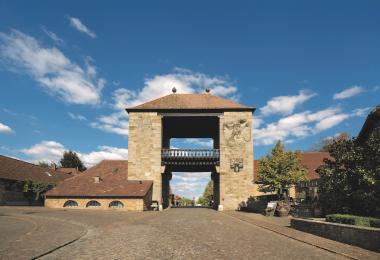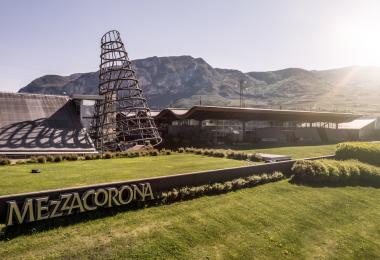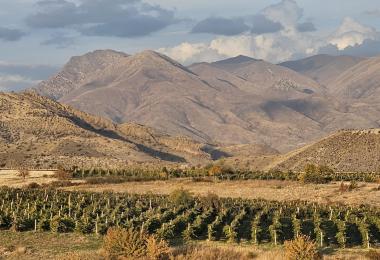Steiermark, the Gateway to History, Culture, and Wonderful Wines
Austria’s southern winemaking region is known to wine lovers as the source of elegant white wines, vibrant rosés and plenty of wine and cultural tourism opportunities. Here’s why you need to know about it.
Steiermark, Austria’s most southern winemaking region, starts at the city of Graz and extends all the way to Slovenia. Although one of the country’s smallest wine regions, it punches well above its weight when it comes to the quality of its wines, thanks to the region’s unique topography and culture. Where else can you see vineyards full of Klapotetz, the giant wooden rattles that scare off hungry birds?
Grapes since ancient times
Steiermark, or Styria as it’s also known, spreads out across the three regions of Weststeiermark, Südsteiermark and Vulkanland Steiermark, and boasts a diverse terroir of steep hills, complex soils and volcanic slopes.
While the majority of vines are grown on the sedimentary soils of the Styrian Basin, others benefit from growing on tough alpine rock, or from the alluvial deposits that were washed into the area. That, coupled with the harsh winters and multitude of steep slopes, mean that the vines really have to work at producing grapes. The result is grapes of great finesse and complexity.
Celts, Romans and Christian monks all recognised the quality of the land and planted grapes here. Over the centuries, war and plague reduced grape growing in some periods, but the region kept bouncing back. Today, Styrian winemakers are known for their sustainable viticulture and low-intervention winemaking practices. Organic and biodynamic methods are increasingly employed, ensuring that the region's vineyards thrive in harmony with nature.
All of this is why Steiermark―which produces less than 10% of Austria’s wines―is renowned for wines of flavour and freshness. In a warming world, where wine alcohols are rising, Steiermarks’s wines are still characterised by moderate alcohols and vibrant acidity.

A paradise of elegant wines
If your idea of Sauvignon Blanc is a glass from which the piercing smell of green berries is emanating, think again. One of the great grapes of the region, the Sauvignon here is multi-faceted and elegant, and if there are green notes to be found, they’re merely grace notes. Other important white wines include Chardonnay (or Morillon, as it’s known locally), Weissburgunder (Pinot Blanc), Grauburgunder (Pinot Gris), Gelber Muskateller and Traminer.
The most widely planted grape is Welschriesling, a light and dry white wine.
Heavily oaked wines are unusual, as the whites of the region are either unoaked, or fermented in old, large casks, although the Chardonnay can be full bodied. There are plenty of lively rosés to be found as well, which are unique in the world. Made from the Blauer Wilbacher grape, which is native to Styria, the rosés are characterised by a vibrant pink colour. These ‘Schilcher’ wines are only found in Weststeiermark and are characterised by strawberry aromas and flavours.
There are also notable Pinot Noir to be found, which offer classic delicate berry notes, coupled with mouthwatering acidity.
Steiermark entered a new era with the 2018 vintage as all three wine-growing regions were awarded DAC status:Vulkanland Steiermark DAC, Südsteiermark DAC and Weststeiermark DAC. The regionally typical white wines – as well as Schilcher in Weststeiermark – are organised into the three categories of Gebietswein (regional wine), Ortswein (“villages'' wine) and Riedenwein (single-vineyard wine). Wines given more time to mature before being released to the market may also bear the additional designation “Reserve”.

A region worth visiting
The gateway to the region is the city of Graz, whose Renaissance and Baroque architecture is some of the best preserved in Europe―plus there’s an Arnold Schwarzenegger Museum! From there, it’s easy to get out into the countryside and enjoy the scenery, complete with views of mediaeval castles. A particular favourite is the South Styrian Wine Road, which offers a complete immersion in land, food and wine, without any need to fend off hordes of other tourists.
The local food emphasises fresh, seasonal ingredients, including salads drizzled with pumpkin seed oil and Backhendl, or fried chicken.
Steiermark's vibrant wine culture is also showcased through its annual festivals and events. The Wine Parade in Klöch, for example, is a vibrant and joyful celebration of wine.
To see what’s on offer, check out austrianvineyards, where you can see the region at a glance.
And don’t forget to check out the Klapotetz, which look like unusual wooden windmills. Really, you have to stand near one to appreciate it―with a glass of wine in hand, of course.









